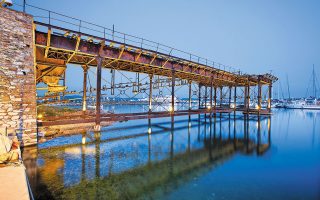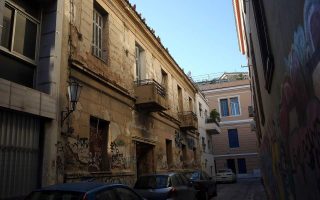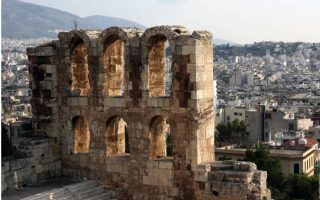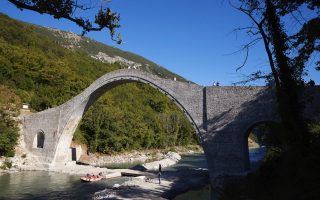Monument of Zalongo listed as cultural heritage site
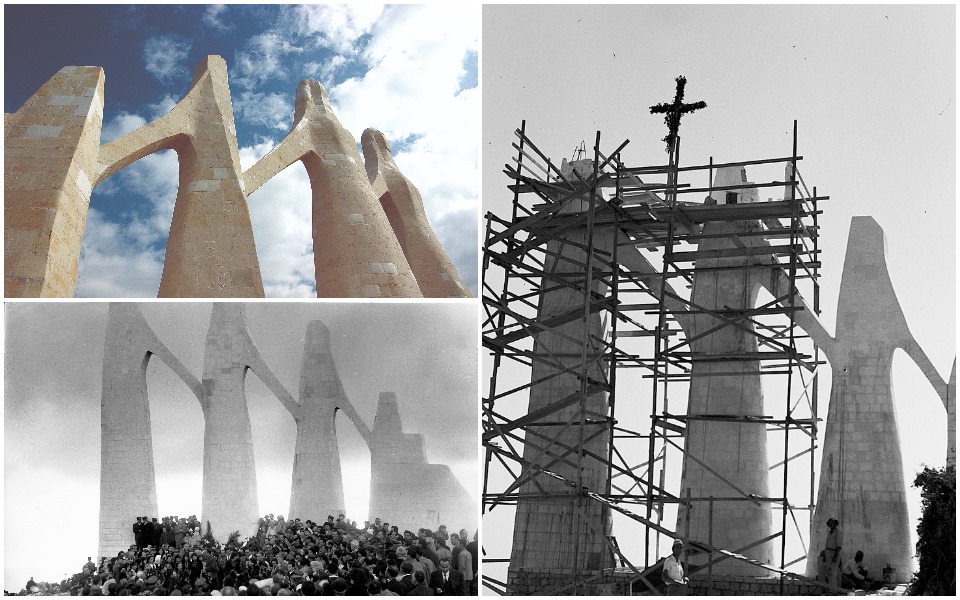
Tall as a five-story apartment building and stretching across the equivalent of two city blocks, the Monument of Zalongo is a spectacular piece crowning the clifftop of Mount Zalongo in Epirus, northwestern Greece.
Hailed as the greatest piece produced by celebrated sculptor George Zongolopoulos (1903-2004), it is not just steeped in symbolism, but was also a remarkable technical and intellectual achievement that, on its 60th anniversary, has been listed by the Culture Ministry as a monument of modern cultural heritage.
“It is a vindication for this great Greek artist, as well as a recognition of the monument’s artistic merit,” says the president of the George Zongolopoulos Foundation, Nicos Theodoridis, of the ministry’s recent decision.
The sculpture was listed following a petition by the foundation lodged in August 2020, which argued that the Monument of Zalongo is “one of the first examples of the principles of modernism being applied in monumental sculpture in post-war Greece.”
The massive sculpture depicting the women of Souli who chose death rather than subjugation by dancing off the cliff with their children, the monument is visible from 30 kilometers away, from the coast of Corfu and from the marvelous archaeological site of Ancient Cassope – making for a truly magnificent sight.
“Despite the rugged and grand spectacle of the Epirote mountains and the expansive sense of the Ionian Sea, you get a feeling of balance and calm,” Zongolopoulos had said of the tableau created by his sculpture.
Its construction was a feat of engineering. Theodoridis explains that the interior is made of fortified concrete, while the outer shell with the forms of the women is composed of 4,300 off-white limestone blocks mined from a quarry 160 kilometers from the monument’s construction site. The stone was transported in chunks and whittled on site to 50x25x20 cm blocks. “All of these tons of building material had to be brought up to the construction site by hand,” he says.
Zongolopoulos started the project by building a lift, but safety concerns demanded that the materials were taken up the cliff by human and pack animal labor. The project took six years to complete, from 1954 to 1960.
“Offers to lend a hand came from everywhere. Soldiers, as well as women and men, residents of the villages of Kamarina, Zalongos and Kryopigi in Preveza, used their animals, their hands and their shoulders, every spring for six years to carry water, cement, gravel, metal and stones up craggy mountain paths, through rocks and bushes, up to the rock where Zongolopoulos and his team of workmen and stonemasons were building the sculpture,” says Theodoridis.
The George Zongolopoulos Foundation was established in 2004 and one of its first orders of business was to ensure that the exposed monument was getting the maintenance and care it needed. In cooperation with the Municipality of Zalongos and the Epirus Regional Authority, the funds were raised to start a restoration effort in 2007. It was a painstaking project that took five years to complete, says Theodoridis, adding that details of how it was carried out by the architect and foundation director Angelos Moretis are available in its archives.
Despite its difficult location, the monument receives 30,000 to 35,000 visitors a year, who brave the 410-step footpath designed by Patroklos Karantinos. The foundation is now seeking to build a cable car up to the site.
In the meantime, bronze copies of the monument on a scale of 1/10, made by Zongolopoulos himself, are on display at the National Glyptotheque, the Benaki Museum and the Psychiko Open-Air Sculpture Gallery, as well as at the Presidential Mansion.

